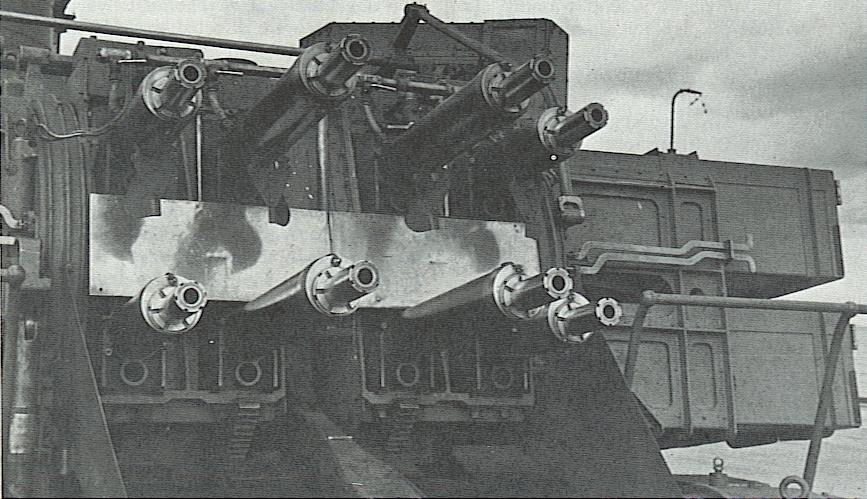
Also known as the "multiple pom-pom," this weapon was essentially a redesign of the 2-pdr Mark II to suit an eight gun mounting. The Mark VIII used the same barrel as the previous weapon, but the new design did have an improved automatic mechanism and replaced fabric belts with steel-links belts which reduced jamming. It has been speculated that the reason that the 2-pdr shell was selected for this weapon was because there were about 2,000,000 rounds left over from the First World War.
This weapon had a long development history. It started off when six 2-pdr Mark II guns were mounted on a common base on HMS Dragon during 1921-22. This was modestly successful, and as a result design work was begun by Vickers and Armstrong on various multiple-gun designs. Armstrong produced a design that allowed continuous fire while the Vickers design did not, but the Armstrong product was also a more complicated design. Vickers won the contract and presented an eight-gun mockup for examination in July 1923 at Vickers, Dartford. Lack of funding delayed proving ground firing trials out to 1927, with sea trials aboard HMS Tiger not being held until 1928. Service introduction was delayed to the end of 1930 and consisted of a single mounting installed on HMS Valiant. Satisfactory completion of trials on Valiant encouraged the Treasury to increase funding and during 1931 Nelson, Rodney and Revenge each received one mounting while Hood received two. The following year saw Furious and Royal Sovereign each receiving two mountings while Renown received one. Production was slow up until just before the war started.
At the time of its service introduction in 1930 this was a very advanced weapon, but by 1939 the rapid improvements in aircraft design had rendered it obsolescent, as it had a low muzzle velocity, lacked a satisfactory explosive shell and no tracer ammunition was provided.
To remedy some of these issues, a higher velocity projectile (HV) was introduced in 1938 but this required a different breech mechanism and other changes to the firing gear. However, guns firing only the older low-velocity projectiles were still manufactured throughout World War II. High velocity and low velocity ammunition and guns were not interchangeable. There were also several other gun variations, as shown in the data tables below. It should be noted that standardization was never a high priority in British ordnance thinking prior to the 1950s.
These guns were manufactured in large numbers throughout World War II, with total production being about twice the number of Bofors 40 mm guns used by the Royal Navy. The Naval Gun Register shows that 6,691 guns were made in Britain including 12 prototypes and a further 843 guns were manufactured in Canada. There were also 219 ex-land service (Army) guns made which were scrapped in 1944-45. Single and quad mountings for smaller ships were also produced after 1935, with the single mounting being widely used as a bow-chaser on coastal convoy escorts during the war.
As originally introduced, this was a recoil operated, "controlled" (essentially semi-automatic) weapon which used a manually turned crank to operate the firing gear in the quadruple and octuple mountings (see note below for a further explanation). In 1939 the octuple mountings design was changed to allow fully automatic firing but this was not extended to the quadruple mountings which were only produced in controlled versions throughout the war. However, the quadruple mountings did replace the crank-turning crewmember with an electric motor sometime during the war.
The internal gun mechanisms were very complex and required much care and skilled maintenance to keep them in working condition. Jams and stoppages were frequent, although the linked ammunition proved to be more reliable in service than the older belt-fed guns.
Constructed of monobloc barrel and the breech block moved parallel with the gun axis.
Actual bore length was 39.37 calibers.
| Designation 1 | Vickers 2-pdr Mark VIII
Suffix designations:
|
|---|---|
| Ship Class Used On | Almost all major warships of World War II |
| Date Of Design | 1923 |
| Date In Service | Octuple Mounting: 1930
Quad Mounting: 1936 |
| Gun Weight 2 | LV: 572 lbs. (259.5 kg)
HV: 850 lbs. (385.6 kg) |
| Gun Length oa | Short connecting block guns: 102.6 in (2.606 m)
Long connecting block guns: 115.6 in (2.936 m)] |
| Bore Length | 62.0 in (1.575 m) |
| Rifling Length | 54.84 in (1.293 m) |
| Grooves | (12) 0.0141 in deep x 0.322 (0.358 x 8.18 mm) |
| Lands | 0.894 in (2.271 mm) |
| Twist | Uniform RH 1 in 30 |
| Chamber Volume | 9.98 in3 (0.165 dm3) |
| Rate Of Fire 3 | Controlled Firing Gear: 96 to 98 rounds per minute
Automatic Firing Gear: 115 rounds per minute |
- ^The different positions in the octuple mounting required different designs for the right and left hand outer and inner guns, suffixed as RHO, LHO, RHI and LHI. Quadruple mountings had right and left hand upper and lower guns and single guns were RHI. For all outer guns and for the upper guns in quadruple mountings, the connecting block in the gun - which took the barrel, buffer cylinders and ejector tube - was lengthened by 13 inches (33 cm) to allow the ammunition feed for inner and lower guns to pass through.
- ^These weights probably do not include the cooling water. Only CHVW and AHVW guns were fitted for water recirculation, other models had simple water jackets. The common filler for these was a prominent funnel at the rear of the gun assemblies, as can be seen in the sketch of the Mark VII quad mounting shown below.
- ^Controlled Firing - In any multiple automatic weapon mounting, if each gun is allowed to fire on its own then they are all going to cycle at a slightly different rate. This means that at some point they are all going to be firing simultaneously, causing obvious shock and vibration problems as well as creating a "gap" in the bullet stream. An alternative to letting the guns fire freely is to synchronize them in some manner such that they fire sequentially and in a pre-determined pattern. This was the path that the British chose for the multiple 2-pdr mountings, and the use of the cranked firing gear for these mountings ensured that the guns were synchronized - which the British for some reason called "controlled." In other words, the cranked firing gear meant that all guns fired at the same rate and in a planned sequential order and effectively meant that these were semi-automatic, not automatic weapons. In the case of the quad mounting, the guns fired in pairs and the octuple mounting fired in quads. In 1939, the British apparently concluded that the concerns of allowing the guns to fire freely was less of a problem for the octuple mountings than it was for the quadruple mountings and so changed the octuple guns so as to eliminate the "controlled" firing gear.
| Type | Fixed |
|---|---|
| Projectile Types and Weights 1a | HE LV 2a 3a: 2.0 lbs. (0.91 kg)
SAP: 2.0 lbs. (0.91 kg) AP: 2.0 lbs. (0.91 kg) HE HV: 1.81 lbs. (0.82 kg) |
| Weight of Complete Round | HE LV: 2.95 lbs. (1.34 kg)
SAP: 2.95 lbs. (1.34 kg) AP: N/A, probably 2.95 lbs. (1.34 kg) HE HV: 2.87 lbs. (1.30 kg) |
| Bursting Charge | HE LV: 0.16 lbs. (0.071 kg)
SAP: 0.05 lbs. (0.023 kg) AP: None (solid shot) HE HV: N/A |
| Projectile Length | N/A
Complete round: 11.995 in (30.47 cm) |
| Propellant Charge | HE LV: 0.243 lbs. (0.11 kg) HSCT/K 134-055
HE HV: 0.2793 lbs. (0.13 kg) HSCT/K 134-055 Others: N/A |
| Cartridge | 40 x 158R |
| Muzzle Velocity | LV: 1,920 fps (585 mps)
HV: 2,400 fps (732 mps) Others: N/A |
| Working Pressure | LV: 15.5 tons / in2 (2,440 kg / cm2)
HV: 16.5 tons / in2 (2,600 kg / cm2) |
| Approximate Barrel Life | LV: 5,000 rounds
HV: 7,200 rounds |
| Ammunition stowage per gun 4a 5a | Royal Sovereign class, Hood, Barham and Malaya: 720 rounds
Warspite: 750 rounds Queen Elizabeth, Valiant, King George V class, Renown, Town class, Dido class and Colony class: 1,800 rounds Edinburgh class: 2,500 rounds Tribal class: 3,500 rounds Ark Royal and Courageous classes: 2,500 rounds Others: N/A |
- ^The Low Velocity type was first introduced in 1914. The High Velocity type was introduced in 1938. HE tracer was issued starting in 1941 and "British Cruiser Warfare" states that the "use of bright tracer ammunition for the 2pdr pompom (sic) in the attacks during the Crete evacuation was particularly effective."
- ^LV projectiles were originally issued with Dual Action Fuzes which had both time and impact functionality and these were still being used up during World War II. See 2-pdr Mark II - Dual Action Fuzes for details.
- ^Complete breakdown of LV shell weight from "Q.F. High Explosive 2 pdr Mark II N Shell":
Empty body: 1.45 lbs. (0.66 kg)
Driving band: 0.875 oz (0.025 kg)
Paint: 0.125 oz (0.0035 kg)
Bursting charge: 2.5 oz (0.071 kg)
Fuze No 131: 5.25 oz (0.15 kg)
Total filled: 2 lbs. (0.9 kg) - ^The usual outfit was HE and HE tracer, but SAP and AP were issued to a limited number of ships.
- ^Ammunition was supplied in 14-round steel-linked belts which could be hooked together. Ammunition feed boxes held 140 rounds per gun for the octuple mounting, 112 rounds for the quadruple mountings and 56 rounds for the single mounting. Note that these are all multiples of 14.
- In most sources, it is stated that HV guns could not fire LV ammunition and LV guns could not fire HV ammunition. However, "British Cruiser Warfare" states that HV guns in the Mark VIII* single mounting could still fire LV ammunition. This source also states that quad mountings often fired only two barrels during training and during prolonged or mass air attacks in order to conserve ammunition.
| Shell Type | Max Range | Effective Range |
|---|---|---|
| LV shells | 3,800 yards (3,475 m) | 1,200 yards (1,100 m) |
| HV shells | 5,000 yards (4,572 m) | 1,700 yards (1,550 m) |
| AA Ceiling with HV shells | 13,300 ft. (3,960 m) | N/A |
| Designation 1b 2b | Octuple Mounts 3b M (later changed to Mark V) 4b Mark VA 5b Mark VI 4b Mark VIA 5b RP 10 Mark VIA* 6b Quadruple Mounts 7b 8b Single Mounts 10b |
|---|---|
| Weight | Octuple Mounts
M (Mark V): 16 tons (15 mt) Mark VA: 15.04 tons (15.3 mt) Mark VIA: 15.68 tons (15.9 mt) Quadruple Mounts
Single Mounts
|
| Elevation | Quad and Octuple Mounts: -10 / +80 degrees
Single Mounts: -10 / +70 degrees |
| Elevation Rate | Manual: 15 degrees per second
RPC Mounts: 25 degrees per second |
| Train | 360 degrees |
| Train Rate | Manual: 15 degrees per second
RPC Quad Mounts: 25 degrees per second
|
| Gun recoil | N/A |
- ^As originally introduced, mountings lacked shields and guns lacked flash hiders. Most mountings had these added during the war.
- ^Mountings capable of firing the HV projectiles are indicated by the star (*) in their designations.
- ^At the start of the war, octuple mountings had been installed on battleships, battlecruisers, some 8-inch (20.3 cm) cruisers, the AA cruisers Coventry and Curlew, and the minelayer Adventure. The largest number at this time was four Mark VI mountings on both Warspite and Ark Royal. By the end of the war, there were as many as eight octuple mountings on the King George V class battleships while the battleship Nelson, the cruiser Sussex and the fleet carriers carried up to six octuple mountings.
- ^RPC and water cooling jackets were added to the Mark VIA* mountings at the same time.
- ^Quad mountings were introduced for smaller ships in 1935-36 and were first successfully tried on the destroyer HMS Crusader (H60). By September 1945 there were six RP 50 mountings on each of the Colossus class carriers, the cruisers Glasgow and Liverpool and six Mark VII*P mountings on the battleships Duke of York, Anson and Howe. Destroyers starting with the "Tribal" class and up to some of the "S" war emergency class destroyers had a single quad mount installed amidships. Some earlier destroyers had a single quad mount fitted during the war.
- ^USN Mark 14 gyro sights were added to some quad mountings in 1945 as an anti-kamikaze measure, mainly for ships intended for the Pacific area of operations. At least the battleships HMS Anson and HMS Duke of York and the carrier HMS Implacable were so fitted.
- ^9.19.29.3The Mark VII and Mark VII* were hand elevated and trained. The Mark VII*P was a late war quadruple mounting with self-contained power that had a dual joystick control. RP 50 Mark VII* mountings also had local joystick controls. Power control was still controlled by the hand cranks, which allowed a simpler "hand clutch" return to manual operation in the event of a loss of power. The crew for the quadruple mountings consisted of eight men, starting with the gun captain, who was in general charge and operated the firing clutch lever. The remainder of the crew were the gunlayer, trainer, crank turner, ammunition feed numbers and loaders for right and left guns.
- ^Production of guns in single mountings apparently did not start until the late 1930s.
- ^The single Mark XVI and XVI* mountings were derived from the twin 20 mm Oerlikon Mark V mountings. The Mark XVI was hydraulically powered by an off-mounting pump driven by the main or auxiliary engines on coastal craft. In the Mark XVI*, an electric motor was provided to drive the pump. Both versions had scooter control. Some of the Mark XVI* mountings were fitted with USN Mark 14 gyro sights and used on the carrier Ocean and some cruisers and destroyers assigned to the Pacific fleet in 1945. Elevation was restricted compared to other 2-pdr mountings as the position of the elevating trunnion axis was lower, due to the smaller nature of the Oerlikon guns.
- 57 twin mountings were made for the Army, but none were ever used afloat.
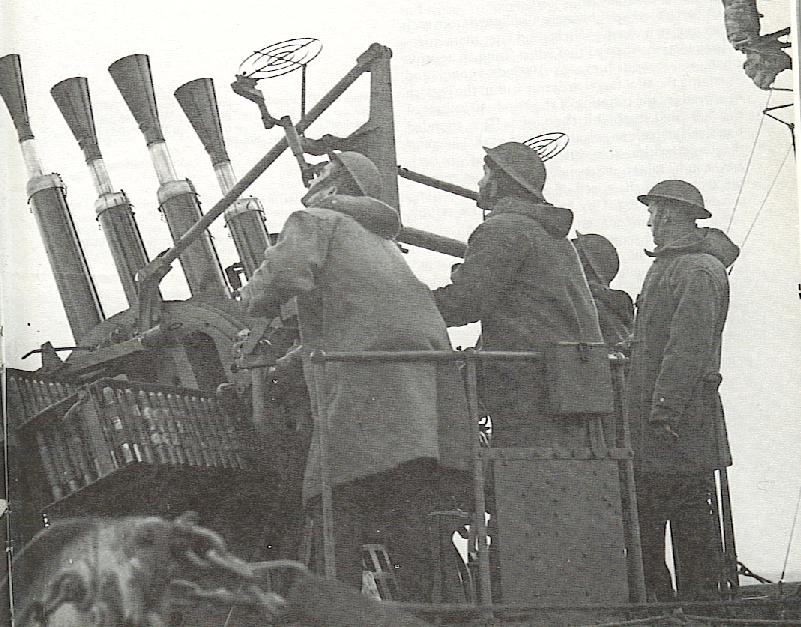
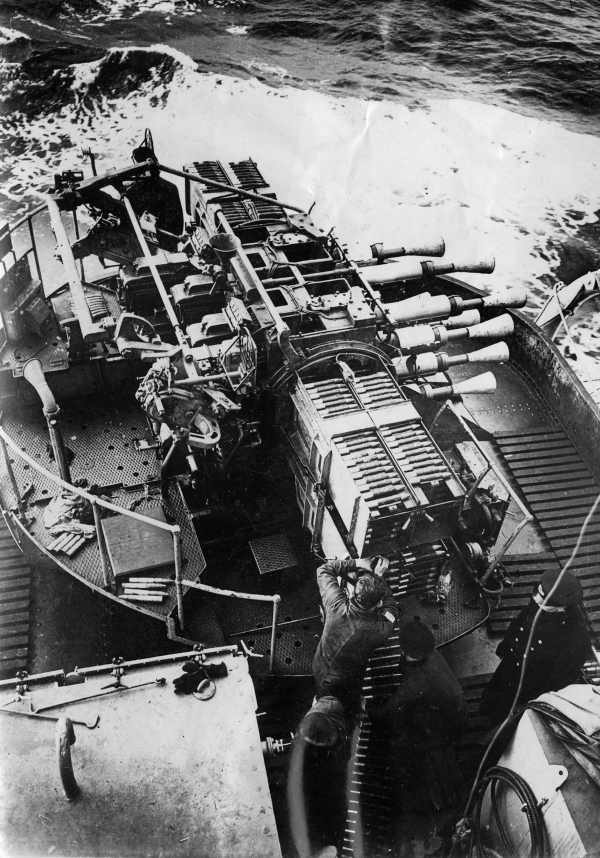
Although it might be possible to load the boxes while the gun was firing, I do not believe that this was the normal procedure. Note that the loaders are off the mounting and so would have to follow the gun as it trained and elevated as they tried to fit the new belts into the end of the boxes. This would be possible, but very difficult, especially if the gun was at high elevations. I would believe that for practical purposes that the gun mounting basically had to stop moving and go to a horizontal position as in this photograph for the boxes to be loaded. State Library of Victoria Image H98.105/3247.
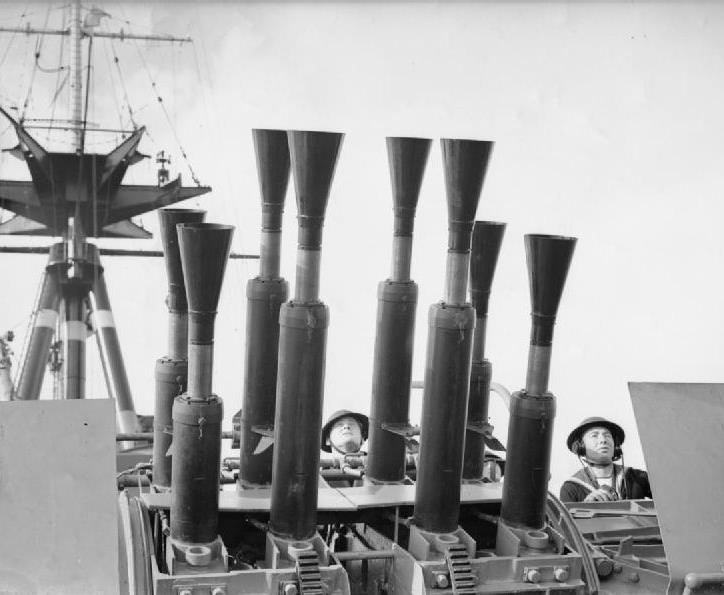
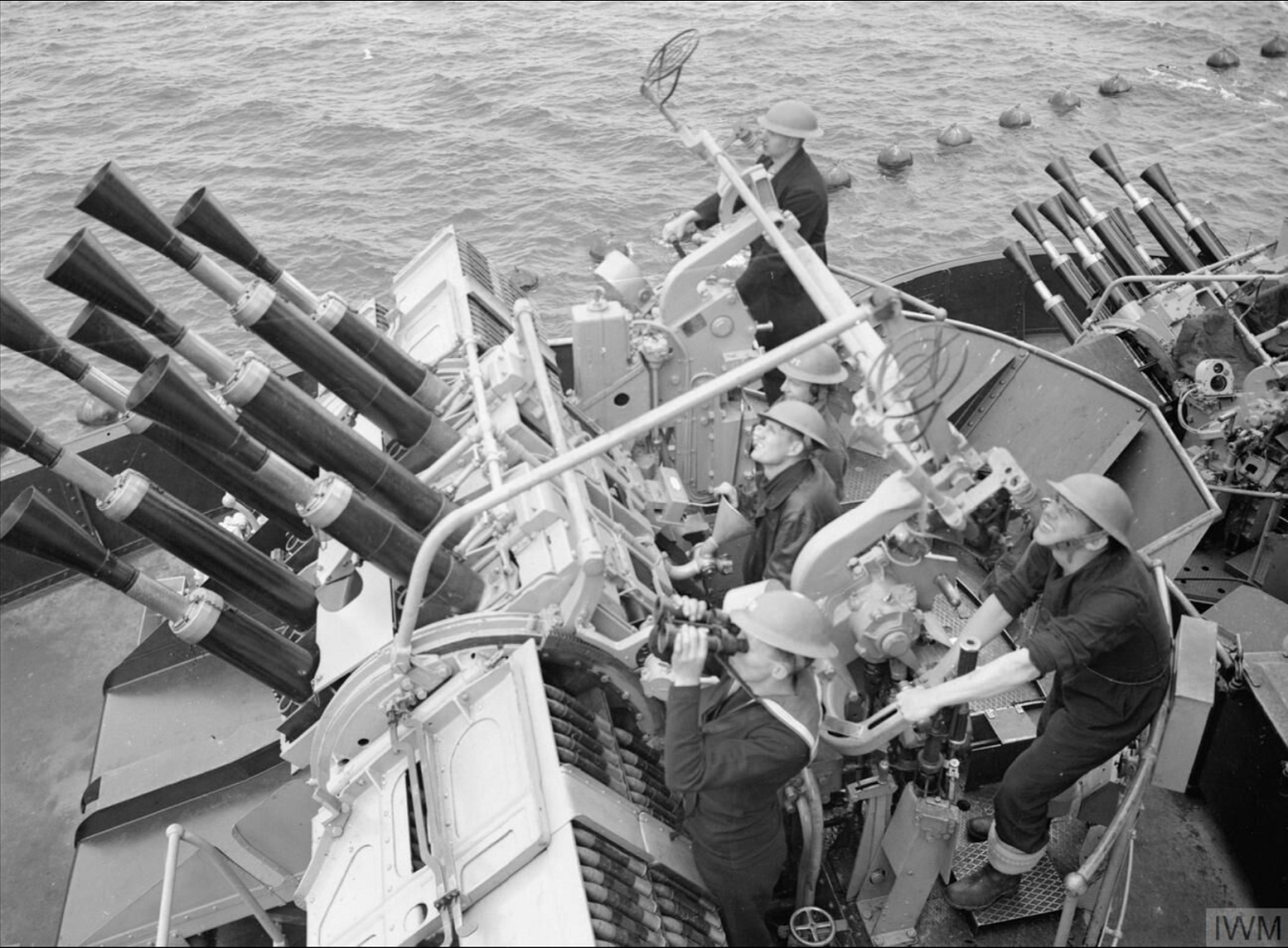
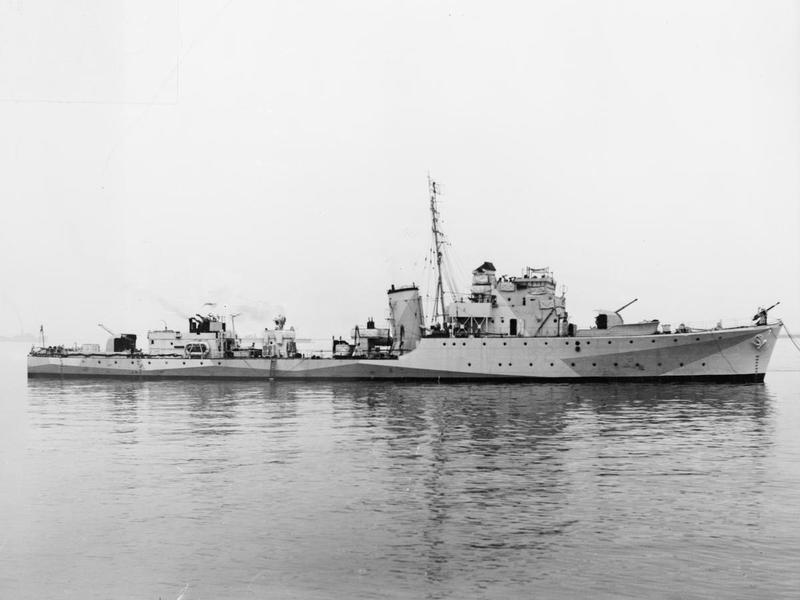
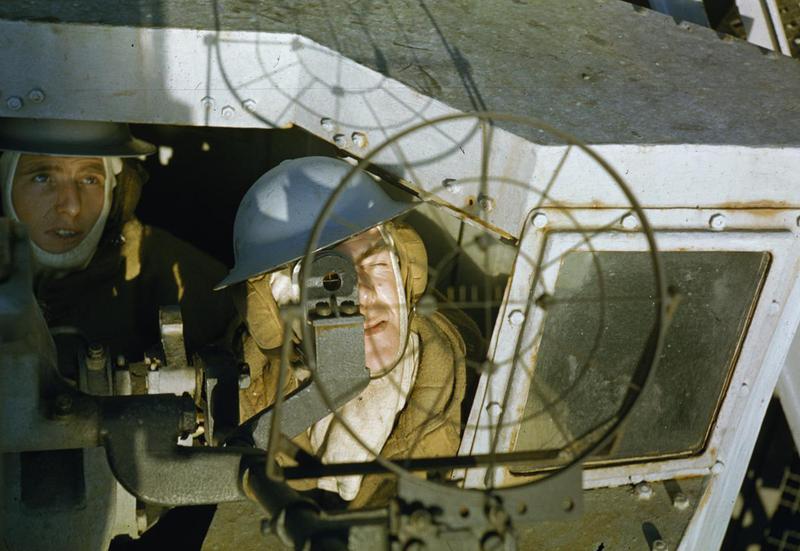
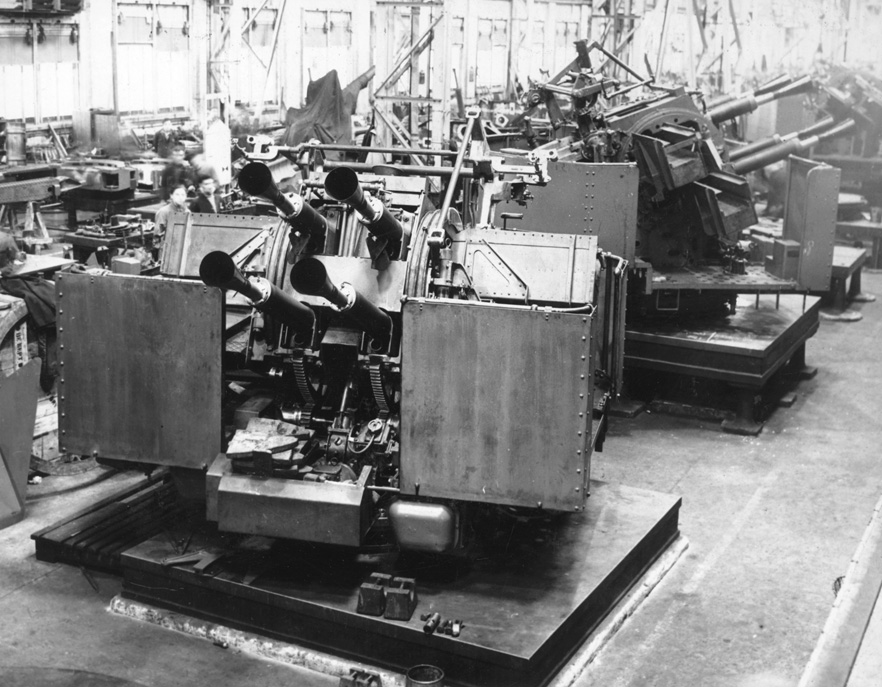
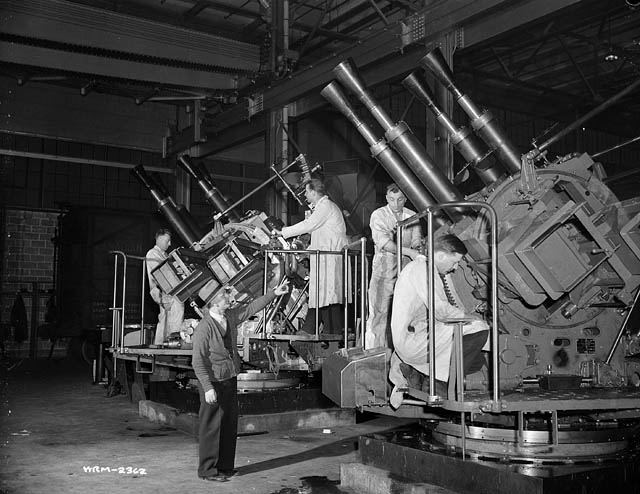
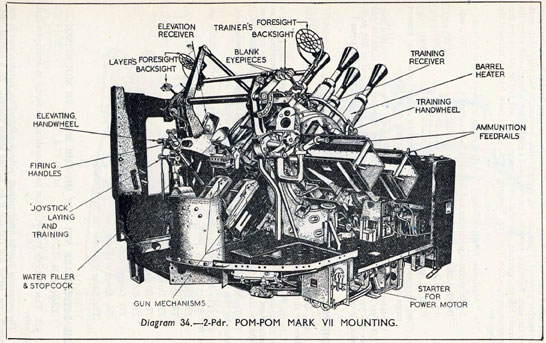
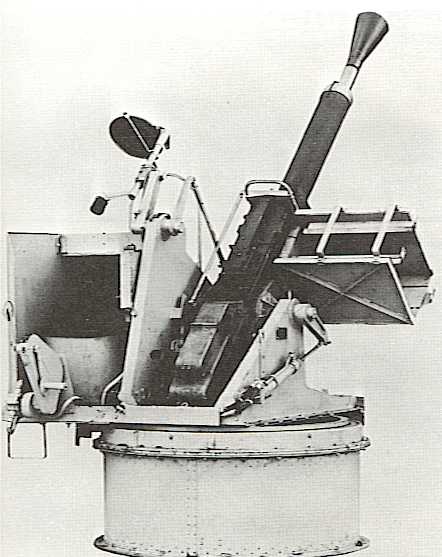
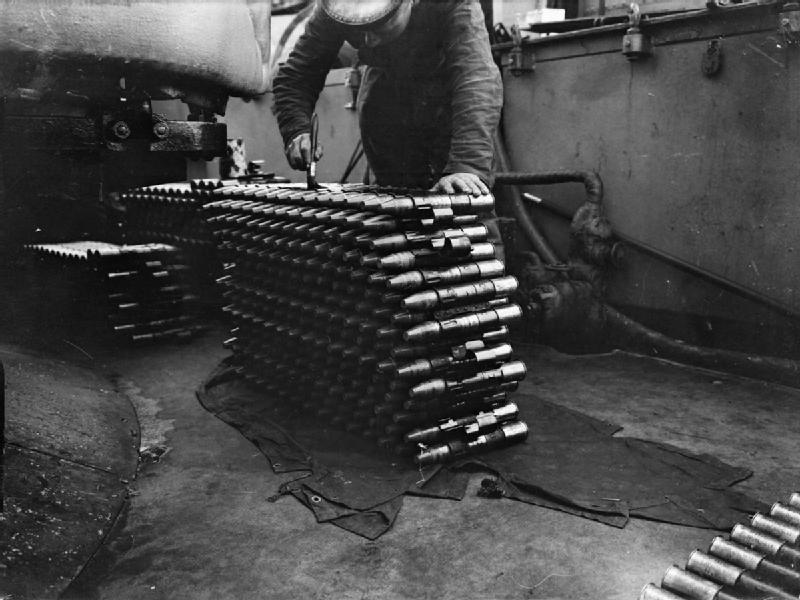
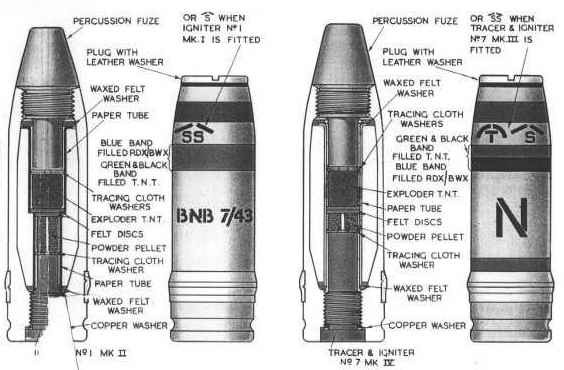
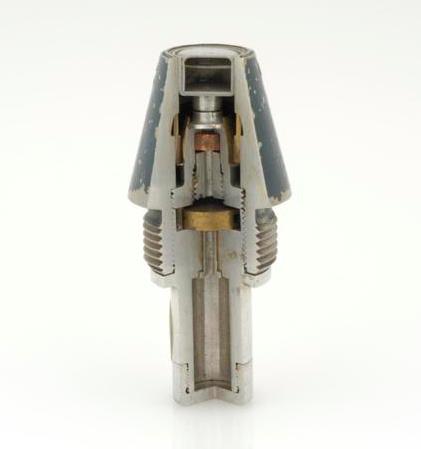
Images at The
Vickers Photographic Archive
See multi-barrel,
gun
sight pounder, pounder
XVI, Mark
VIII guns, VIA,
40mm
barrelled four, barrelled
naval mk and flash
protector
Images at Australian War Memorial
Photograph of 2-pdr ammunition in belts 017310
"Big Gun Monitors: The History of the Design, Construction and Operation of the Royal Navy's Monitors" by Ian Buxton
"Naval Weapons of World War Two" by John Campbell
"Destroyer Weapons of World War 2" by Peter Hodges and Norman Friedman
"British Carrier Aviation" and "US Destroyers: An Illustrated Design History" both by Norman Friedman
"Battleships: Allied Battleships in World War II" by W.H. Garzke, Jr. and R.O. Dulin, Jr.
"British Battleships of World War Two" and "British Cruisers of World War Two" both by Alan Raven and John Roberts
"British Cruiser Warfare: The Lessons of the Early War, 1939-1941" by Alan Raven
---
"Q.F. High Explosive 2 pdr Mark II N Shell - Forged Steel with Fixing Screw Design."No. 21,071.c.(1) / A.D.G.S/3/164 dated 24 February 1916
---
Special help from Anthony G. Williams
20 February 2008 - Benchmark
16 January 2010 - Added photograph of Quad Mounts under construction in Canada
06 September 2010 - Added explanation for "Controlled Firing" and notes on mountings
24 September 2011 - Added outfit on Edinburgh class
16 June 2012 - Added photographs of HMAS Shropshire and single pom-pom
04 January 2014 - Added photographs of HMS Rodney, close-up of gunsight, ammunition and fuze
22 September 2014 - Added photograph of HMS Weynell
28 November 2015 - Changed Vickers Photographic Archive links to point at Wayback Archive
17 March 2017 - Converted to HTML 5 format
14 March 2019 - Reorganized notes, added link to Dual Action Fuze section on 2-pdr Mark II datapage, added note regarding
Army twin mountings, moved mention of guns exported to Japan to the Mark II datapage
08 May 2019 - Added notes regarding use of tracer ammunition during the battles for Crete and the use of LV ammunition
in the Mark VIII*
14 June 2021 - Additional mounting comments regarding crew size and composition
17 December 2021 - Added photograph of quad mountings under construction at Scotswood
26 April 2022 - Added data to photograph caption
22 January 2023 - Added photograph of 2-pdrs on HMS Anson
